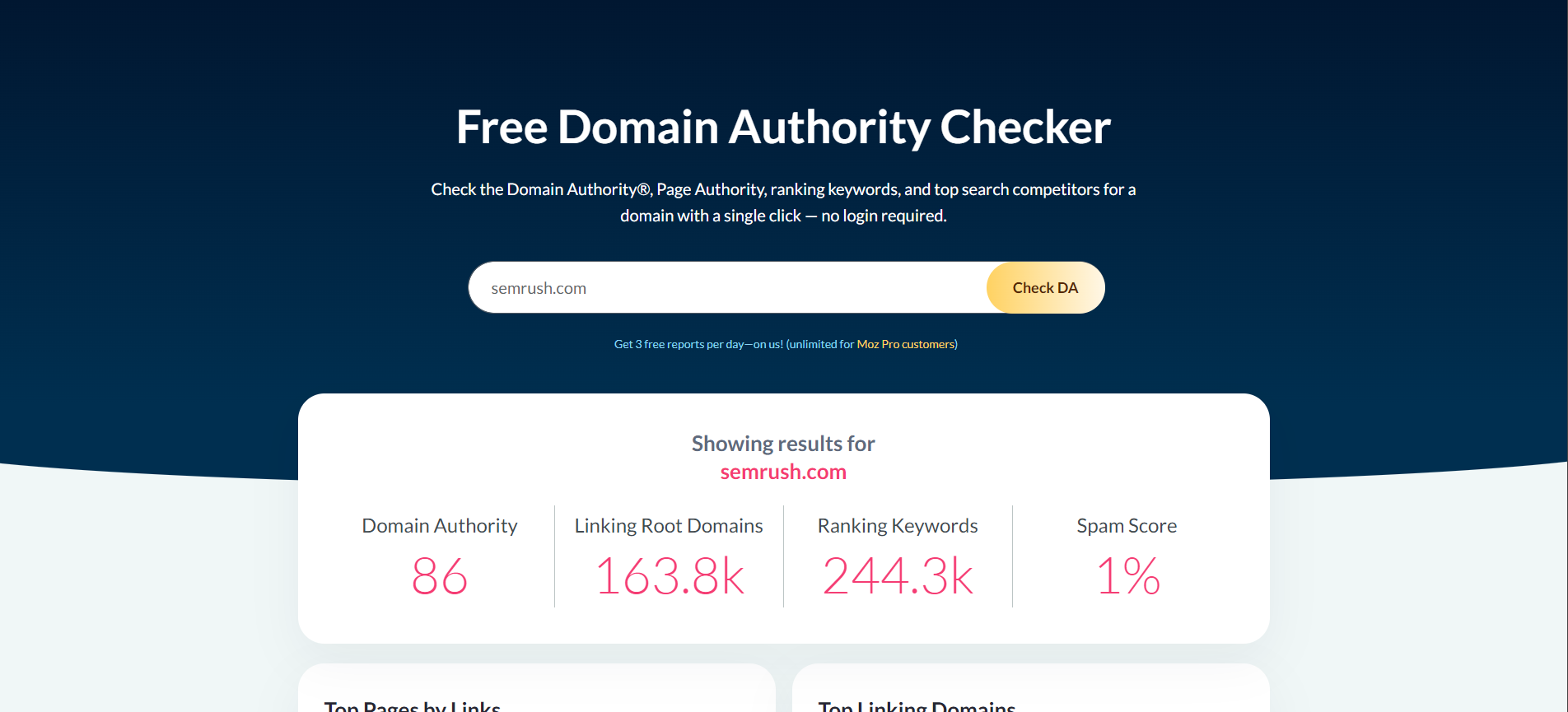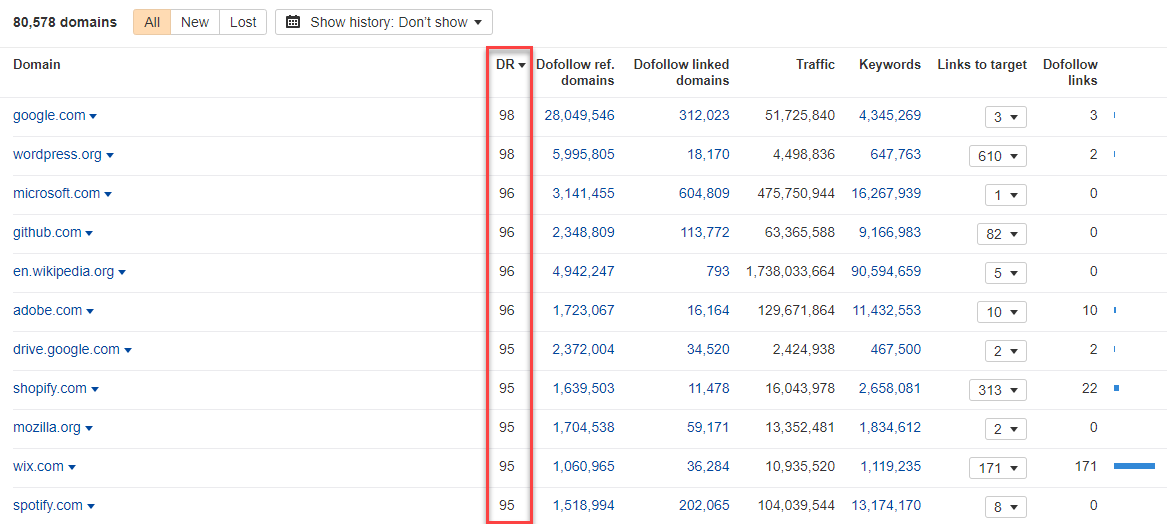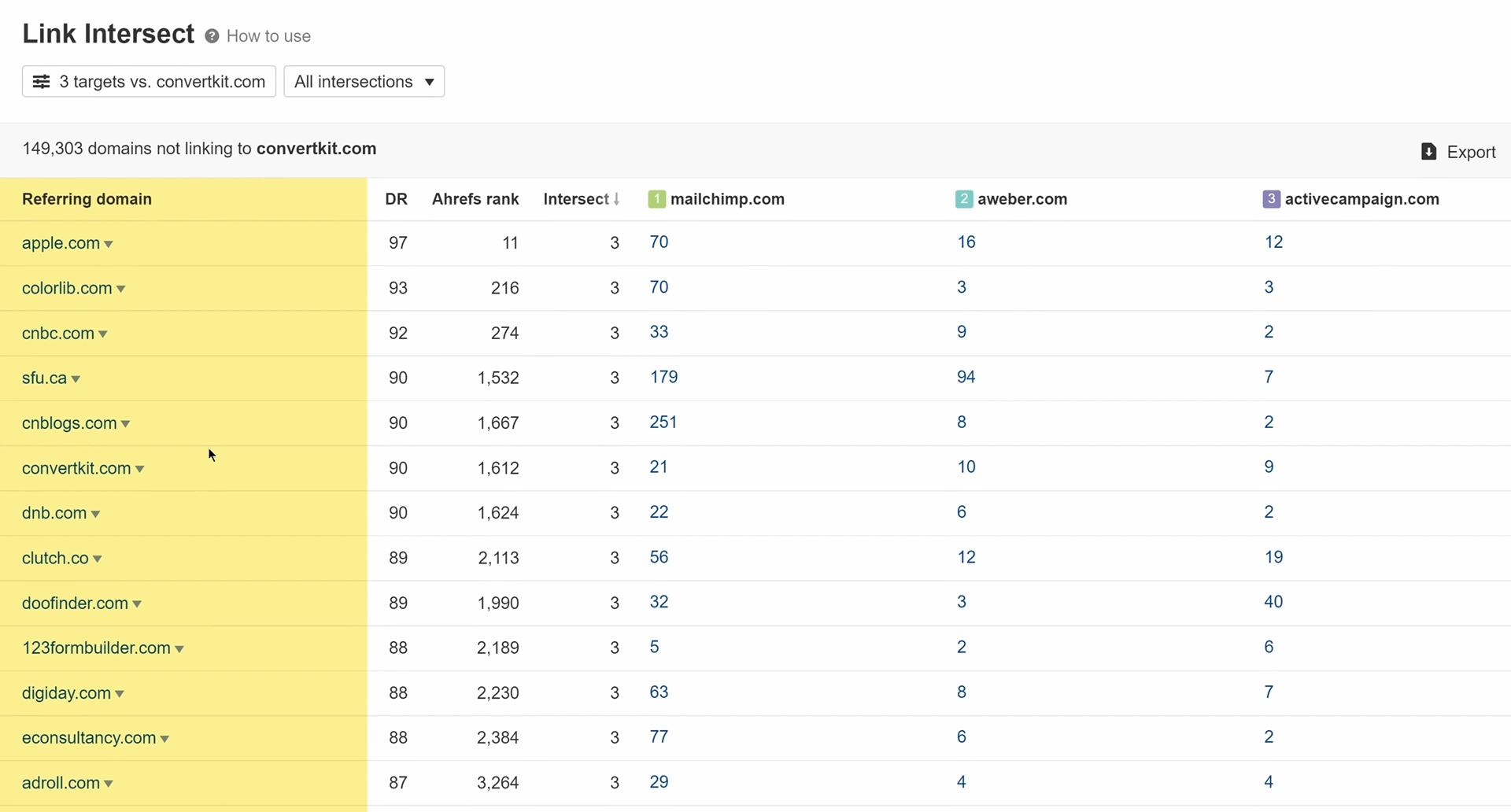Stuck seeing no results from your link building? You’re not alone. Many SEOs find themselves lost in a sea of metrics, unsure which ones count in their link building campaign. But what if you could crack the code to link building, improve your search rankings and leave your competition in the dust?
In this guide we’ll reveal the metrics that will transform your link building. Whether you’re a pro or a newbie, you’ll learn how to use these metrics to get better links and more search traffic. Ready to level up your SEO? Let’s get started.
Link Building Metrics Explained
To be good at link building, you need to know the metrics that matter. Let’s break down the key indicators that will make or break your SEO.
Domain Authority (DA) and Domain Rating (DR)
Domain Authority (DA) and Domain Rating (DR) are two of the most important metrics in link building. But what are they and why should you care?

DA is developed by Moz and DR is developed by Ahrefs. They are scores that predict how well a website will rank in search engine results pages (SERPs). They range from 0 to 100, the higher the score the more authority and ability to rank.
Another important metric to consider is the number of linking root domains, which reflects the number of distinct domains linking to your website.
In short, they give you a quick view of a website’s overall strength in the eyes of search engines. When you’re building links to sites with higher DA or DR, you’ll give your own site a big authority boost.
But here’s the thing: while higher DA/DR scores generally correlate with better search rankings, they’re not the whole story. Google doesn’t use these metrics directly in its algorithm. They’re just a proxy for the complex calculations search engines do.
That said, don’t get too hung up on small DA/DR differences. A link from a site with a DA of 50 isn’t twice as valuable as one from a site with a DA of 25. Focus on the overall quality and relevance of the linking site rather than the numbers.
Page Authority (PA) and URL Rating (UR)
While DA and DR give you a broad view of a website, PA and UR dive into individual pages, these metrics give you a more detailed view of the ranking potential of specific pages on a website. The relevance and quality of the linking page also play a crucial role in determining the value of a backlink.

PA, another Moz metric, predicts how well a page will rank in search results. UR, Ahrefs’ equivalent, measures the strength of a target URL’s backlink profile. Both metrics are 0-100, the higher the score the stronger the page.
These metrics will help you identify the pages to target for link placement. A high PA or UR means the page already has a lot of link equity so it’s a great target for your link building efforts.
Pro tip: When reaching out for guest posting or link insertion opportunities, target pages with high PA or UR. These pages will pass more link equity to your site and potentially rank you higher than links from lower scoring pages.
Remember though, relevance trumps numbers. A link from a highly relevant page with moderate PA/UR can be more valuable than a link from an irrelevant page with high scores.
Referring Domains and Link Quality
While individual link metrics are important, the overall picture of your link profile, including the quality and quantity of links pointing to your site, is just as important. This is where referring domains and link quality come in.
Referring domains are the number of unique websites linking to your site. It’s a key indicator of your site’s link diversity. Search engines like Google love diverse link profiles, which means your site is recognized across the web.
Ahrefs computes link quality based on DR as well. The higher the DR of the referring domain, the more authoritative the domain is, and the more reason you should ensure that you do not lose that link from the site!

Why is this important? Think of it this way: would you trust a product more if it was recommended by one person 100 times or by 100 different people once each? Search engines work the same way. A high number of referring domains means widespread recognition and trust.
But quantity isn’t everything – quality matters just as much, if not more. High-quality links come from authoritative, relevant websites in your niche. These links carry more weight and can rank you higher.
When evaluating link quality, consider:
-
The linking site’s relevance to your niche
-
The site’s own DA/DR and overall authority
-
The context of the link (is it editorial or clearly paid?)
-
The site’s traffic and engagement metrics
Pro tip: Focus on building relationships with high quality websites in your industry. These relationships will lead to natural, editorial links that search engines love. Remember one high quality link can often outweigh dozens of low quality ones.
Anchor Text
Anchor text, the text in a hyperlink, is a key element in both user experience and SEO value. It’s a signpost for search engines to understand the content of the linked page. In link building anchor text is a powerful tool but one that needs to be used carefully. It's also important to understand the role of nofollow links, which instruct search engines not to pass link equity.
The importance of anchor text lies in its ability to convey relevance, enhance user experience and provide ranking signals to search engines. Descriptive anchor text helps search engines understand the topic of the linked page, while clear anchor text helps users navigate, increasing the chances of click throughs. Google uses anchor text as one of many signals to determine what a page is about and how it should rank.
But approach anchor text optimization with caution. Over optimization can backfire big time. If too many of your backlinks use exact match keyword anchors it might raise red flags with search engines and get you penalized.
To know how a website's anchor text spreads, enter the domain's URL on Site Explorer and go to Backlink profile > Anchors to see the top anchor used by domains linking to your site.

To optimize anchor text effectively, aim for variety in your approach. Mix exact match, partial match, branded, and generic anchors to create a natural-looking link profile. Keep the anchor text natural and make sense in the context of the surrounding content. Don’t force keywords where they don’t belong; this will look manipulative to users and search engines. Instead, use long tail variations, which can help you rank for a wider range of relevant queries.
Using Link Metrics to Get Better Links and More Search Traffic
Now that we’ve covered the metrics, let’s put this into action to improve your link building and increase your organic traffic.
Using Metrics to Find High Quality Link Opportunities
Smart link builders don’t just cast a wide net – they use metrics to target the best opportunities. To target high DA/DR sites effectively start by creating a list of potential link targets in your niche. Analyzing the root domains of potential link targets can provide insight into their link profile and authority.
Use tools like Moz or Ahrefs to check their Domain Authority or Domain Rating. While you should focus on sites with higher scores as these will pass more link equity, don’t discount mid range sites altogether. A DA 40 site that’s highly relevant to your niche can be more valuable than a DA 70 site that’s not.
Analyzing referring domains for link gaps is another key strategy. Do a competitor analysis to find sites that link to your competitors but not to you. These are link gaps you can fill. Ahrefs' Link Intersect feature is good with this.

Look for sites with a good number of referring domains themselves – these are often hub pages or resource lists in your industry.
Using Metrics to Enhance Outreach
When reaching out to a website, look beyond the domain-level metrics. Use Page Authority or URL Rating to find the best web page to link to.
For example, if you’re pitching a guest post, suggest topics that complement their highest PA/UR pages. This shows you’ve done your research and increases the chances of your link being placed on a strong page.
Improving pitch success with anchor text analysis is another tactic. Analyze the existing anchor text profile of your target sites to see what they like to link to. This will help you craft better pitches. If you see a site that uses descriptive non-keyword anchors, mirror this in your outreach. Propose natural contextual anchor text that fits with their content style.
Monitoring and Adjusting to Get the Most Out of It
Regularly audit your backlink profile using tools like Google Search Console, Ahrefs, or Moz. Watch for sudden drops in link metrics, which could indicate lost links or penalties. Look at the overall trend of your metrics. If your DA/DR and referring domains aren’t increasing steadily, it might be time to reassess your strategy.
Don’t just focus on traditional SEO metrics. User engagement metrics like time on page, bounce rate and social shares using tools like Google Analytics can give you valuable insights for your link building.

Create content that drives engagement as this will attract natural backlinks. Use Google Analytics to find your best performing pages and create similar content to get more high quality links.
Setting up alerts for your key metrics is a pro tip. This will allow you to jump on new link opportunities or address any issues that arise.
Link Building Metrics Trends and New Thinking
As the digital world changes so do the metrics and strategies for link building. Being ahead of the curve can give you a big advantage in your SEO. Let’s look at some of the emerging trends and new thinking in link building metrics.
AI and Machine Learning
Artificial intelligence (AI) and Machine Learning are changing many aspects of SEO. These technologies are enabling more advanced predictive analytics in on-page strategies.
When it comes to link building, however, AI is still far behind. You can't chat ChatGPT to help you scour links, for example, because LLMs aren't designed for this specific purpose. For this to work, you would need a tool like Ahrefs to scrape its database of links and content to help you determine potential link partners, best link building strategies to pursue for your site, and more. However, these aren't on the card just yet.
However, there are tools that approximate what would pass as AI nowadays. Link-building tools like Responsa and Linkee let you create a link campaign and upload your sources of prospect sites, and both will help match up the data and provide you with detailed information about which sites to link with, why, and how.

While not completely AI, at least tools like this are proof that developments in AI will soon make its way into your link building strategy.
Conversely, it’s important to remember they should complement not replace human expertise. The best link building strategies will combine the power of AI with the subtlety and creativity of experienced SEO professionals.
User Experience and Engagement Metrics
Search engines are placing more emphasis on user experience in their algorithms, and this is impacting link-building metrics, too. Traditional link metrics like domain authority and backlink count are being considered alongside user engagement metrics to determine a link's value.
Time on page, bounce rate, and click-through rate are becoming link quality indicators. A link from a high authority site might look good on paper, but if users bounce from the page, the actual SEO value might be limited. A link from a lower authority site that drives engaged traffic could be more beneficial in the long run.
This is encouraging a more joined up approach to link building. Instead of just focusing on getting links from high authority sites SEOs are now considering how those links will impact user behaviour. This might involve looking at the content quality of potential link partners, their site design, and mobile responsiveness.
To take advantage of this trend, consider incorporating user engagement metrics into your link evaluation process. When evaluating link opportunities, look beyond domain authority and consider metrics like time on page or social engagement levels. Also, focus on creating high-quality, engaging content on your own site to get the most value out of the links you get.
Local SEO Metrics
With the rise of “near me” searches and Google’s increased focus on local results local SEO metrics are becoming more important in link building strategies. Understanding and using these metrics can give a big boost to local search visibility for businesses with a physical presence or targeting specific geographic areas.
Local citations which are online mentions of a business’s name, address and phone number (NAP) are local SEO metrics. The consistency and accuracy of these citations across the web can impact local search rankings. Tools that track citation accuracy and completeness are becoming essential for local link building.
Another local SEO metric is the presence of location-specific anchor text in backlinks. Links that include city or region names can help search engines associate a website with specific geographic areas. But as with all anchor text, it’s important to vary it to avoid over-optimisation.
Review signals are also becoming a local SEO metric. The number, recency, and sentiment of reviews on platforms like Google Review, Yelp, and industry-specific review sites can impact local search rankings. While not traditional “links”, these review platforms often provide dofollow links that can benefit both local and general SEO.
To use these local SEO metrics in your link-building strategy, consider partnering with local businesses, sponsoring local events, or creating location-specific content that naturally attracts local links. Also make sure your NAP is consistent across all online platforms and actively manage your presence on relevant review sites.
Master Link Building Metrics with Us
Understanding and using the right metrics is key to link building success in today’s complex SEO world. From core metrics like Domain Authority and Page Authority to the latest trends in AI and local SEO each plays a part in your link building strategy.
While metrics are useful, they should guide your campaign, not dictate it. The most successful link building campaigns balance quantitative metrics with qualitative factors like relevance, user experience and content quality. It’s not just about getting links from high authority sites it’s about building a diverse natural link profile that provides value to your audience and signals your site to the search engines.
At Charles Floate Training we are experts in the latest SEO strategies that deliver real results. Our team is always up to date with the latest industry trends and best practices so our clients have access to the best link building techniques.
Whether you are just starting out with SEO or looking to refine your existing strategy, we can help. Our training programs and consultancy services will give you:
-
In-depth analysis of your current link profile
-
Customised link building strategies for your niche and goals
-
Expert guidance on how to use the latest metrics and tools
-
Hands-on training to master advanced link building techniques
Get in touch with us by choosing from our link building packages.

